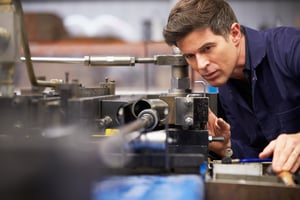The decarbonization of the HVAC/R industry was on full display at the 2023 AHR Expo in Atlanta,...
Four Facts to Know about HVAC/R Coil Corrosion: Copper versus Aluminum
When it comes to the longevity and efficiency of HVAC systems, one critical factor manufacturers consider is coil corrosion. Corrosion not only reduces performance but can also lead to costly repairs and premature system failure.
This blog covers four facts regarding the corrosion of copper versus aluminum in heat exchangers, debunking common misconceptions.
For a comprehensive overview, read this paper titled Dispelling Misinformation about Corrosion of HVACR Coils by the Copper Development Association. The paper covers why round copper tubes prove superior to round aluminum tubes in nearly all applications. The paper delves into the truth about corrosion, the case against aluminum, corrosion of copper tubes, pitting and formicary corrosion, ant nest corrosion, and more.
1. Copper tubes have excellent durability and corrosion resistance
Round copper tubes are the go-to choice for heat exchanger coils in most applications. Their outstanding track record of performance, durability, and corrosion resistance has made them the industry standard. Copper tubes are preferred in air-conditioning, refrigeration, and heat-pumping applications, including condensers and evaporators.
Tube diameters for these heat exchangers range from conventional three-eighth-inch tubes to smaller 5 mm technology featuring smooth and inner-grooved options. Compared to brazed aluminum microchannel coils, round copper tubes outshine in reliability.
Microchannel coils, despite their compact design and increased heat transfer coefficients, suffer from refrigerant maldistribution, large header volumes, defrosting difficulties, poor drainage, and cleaning challenges. In contrast, smaller-diameter copper tubes with internal enhancements, such as microfins, deliver efficient performance without the drawbacks of microchannel technology. These tubes increase the efficiency of condensers, evaporators, and HVACR systems, offering savings on materials and refrigerant reduction.
2. Corrosion in copper tube heat exchangers is rare
As HVACR industry experts shifted towards smaller diameter copper tubes, concerns emerged about their susceptibility to pitting and formicary corrosion. Critics argued that the thinner walls of 5 mm tubes made them more prone to corrosion. However, these claims were baseless and were dismissed in subsequent lawsuits. Corrosion in copper tube heat exchangers is rare in general, and formicary corrosion is even rarer than pitting.
Corrosion primarily occurs due to specific chemical contaminants in the environment and is more common in aluminum heat exchangers. Tube diameter has little to do with corrosion occurrence, as it mainly stems from environmental factors.
Formicary corrosion affects only a small percentage of copper heat exchangers when exposed to certain chemicals. Replacing the affected heat exchangers with coatings protects them from corrosive chemicals. It is difficult to attribute tube diameter or wall thickness to corrosion, as it affects only a small percentage of units.
Thus, these corrosion mechanisms do not justify avoiding the use of smaller-diameter copper tubes.
3. Copper coils only require coatings in chemically aggressive environments
 The durability and corrosion resistance of copper surpass that of aluminum, making it a superior choice for heat exchangers. While both aluminum and copper coils can be extended in service life through coatings and maintenance, coatings are typically mandatory for aluminum due to its sensitivity to humidity and temperature.
The durability and corrosion resistance of copper surpass that of aluminum, making it a superior choice for heat exchangers. While both aluminum and copper coils can be extended in service life through coatings and maintenance, coatings are typically mandatory for aluminum due to its sensitivity to humidity and temperature.
In contrast, copper coils only require coatings in chemically aggressive environments. Copper and aluminum naturally form protective layers that slow corrosion, but these layers are not absolute, and aluminum is more prone to corrosion.
4. Aluminum rapidly deteriorates in humid environments
While both materials can last a considerable amount of time with proper maintenance and coatings, copper is deemed more durable and corrosion-resistant than aluminum. The protective passivation layer that forms naturally on copper and bronze provides better protection against corrosion compared to the aluminum oxide layer that forms on aluminum.
Despite attempts made by the aluminum industry to introduce aluminum heat exchangers in HVACR for the past 50 years, they have often failed due to aluminum's rapid deterioration in humid environments, especially in the presence of salt. This is due to the common occurrence of a white coating of aluminum oxide and pitting in heat exchanger applications. Brazed aluminum microchannel, successful in the auto industry, has had mixed success in HVACR due to stress corrosion cracking and higher pressures. Additionally, aluminum microchannel heat exchangers have proved incompatible with hot, humid climates.

Get in touch with the Copper Development Association to partner on the research and development of air-conditioning, refrigeration, and heat pump systems and components, in particular, design, analysis, and optimization of tube-fin, small-diameter copper tubes, and brazed plate heat exchangers.


